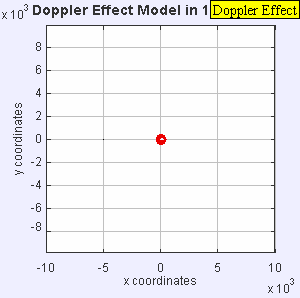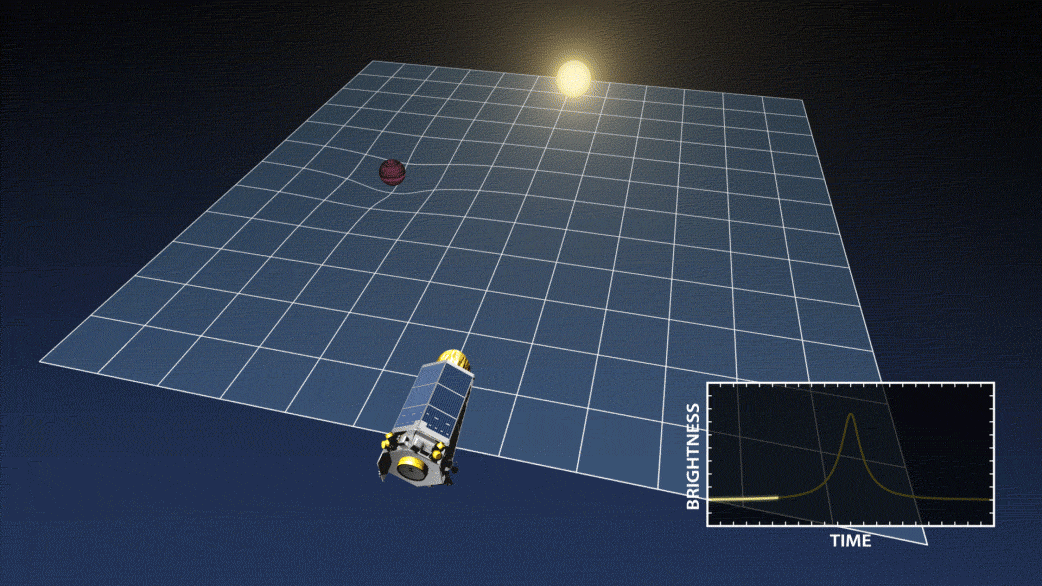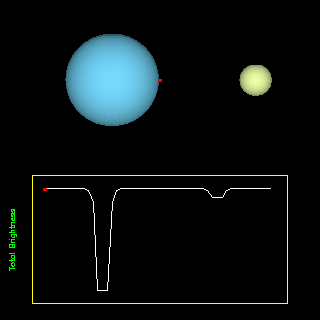How do we find exoplanets? PART 1

For most of us, seeing colour is pretty easy. The Sky is blue, the sun is yellow, the ocean is deep blue, the Steemit page is white.
Except all of that is wrong: The sky is clear, the sun is white, the ocean is clear and the steemit page is Red, Green and Blue. (I can explain each of those in the comments if you want)
Clearly human eyes and brains are not reliable when seeing colour. So how on Earth do planetary scientists tell us what colour exoplanets are, thousands of lightyears away?
What we need are tools.
Pointing a telescope at a planet is not enough when you're looking for a tiny dot quadrillions of kilometers away (though this IS a technique with the right glare-blocking tools). There's a whole range of superior techniques and technology needed to get a proper look.
The Transit Method (2734 planet discovered)
This is probably the most known method and seems to be the easiest method, having found almost 3,000 planets to date this way. Rather than trying to look for a tiny body that doesn't emit any light, it's much better to stare as the star it orbits. When you observe a dip in luminosity, that's not because the star is dying, but because something is in the way, blocking some of that light. If this happens at regular intervals, you have yourself an orbiting planet.
Then you can get a good measure of its size by how much the light dims, and composition by observing the light that passes through any of the planet's atmosphere.
To do this, scientists use:
Spectroscopy
Without wasting too much time getting sidetracked, each gaseous element has a kind of light signature. Helium, for example, emits a certain variety of light when heated up, and different elements have their own unique fingerprint.
Below you can see the brighter vertical lines are the absorbed wavelengths that we don't see for each element, and the rest is emitted to us. So we can pretty reliably get an idea of which elements and molecules are in the atmosphere this way

Radial Velocity (643 planets discovered)
As mentioned previously, planets actually orbit the barycenter, the shared point that stars and planets orbit. The bigger the planet, the further from the sun's centre the barycenter is.For big planets, it's quite easy to use this to our advantage. By using dollpler shifting of light, scientists can observe the difference in movement the star has; when the star is moving away, light waves are 'stretched' and are viewed as redder light. when it goes towards us, that light is squeezed together and become more bluish.
Think of the planet in the below image as an ambulance rushing past you. When the ambulance is coming towards you, the pitch is higher because soundwaves are scrunched together. When it passes by, the soundwaves are stretched out so the pitch becomes lower. The same applies to light.

Miniscule movements
Another similar method is to simply observe the wobble in relation to other nearby stars. By measuring the tiny differences in distance between two or three other stars as the main orbits its barycenter, you can accomplish the same reults
Gravitational microlensing (47 planets discovered)
The more massive the object, the bigger the bowling ball and the more warped space becomes.
When light passes through these big pits of gravity, it too can be bent, creating a kind of gravitational lensing effect (that we officially call 'gravitational lensing').
So when there is one big star that, from our perspective, passes by a more distant star, the light of the distant star is bent around the closer star and focussed like a magnifying glass, where we can then see it a little bigger, albeit temporarily.

By observing this change in brightness, Astronomers can get a glimpse of a planet orbiting the stars, depicted as a blip of light. This is not something that can be predicted, so planets are discovered this way by watching huge swathes of the sky with a whole bunch of telescopes. That being said, this is how some rogue planets have been discovered, with one-off lensing as a planet passes a star and briefly bends its light.
As technology is refined and developed, new ideas are implemented and peoples brains get bigger, thousands more will be found with greater ease than ever before.
There have been some frankly bizarre planets found using this technology, and thanks to spectroscopy, we can get a really imaginative insight to what they would actually look like with the human eye.
I'm going to add a second part TOMORROW to provide some pretty cool examples.
Thanks for reading!
Image Sources
Transit Method
Spectroscopy
Doppler Shift
Gravitational microlensing
Water World
Eyeball Earth
Extreme Exoplanet Weather of Death and Doom
Planet as old as the Universe
Strange Star Systems
Mystifact - What is a planet?



wow..
very good post..
https://steemit.com/@argd88
Great insight . love this
I have never thought about using gravitational lensing to look for planets... This is actually pretty neat!
Yeah it's pretty wild how innovating exploration can be. Not many discovered this way yet, but I reckon it'll have major advantages soon